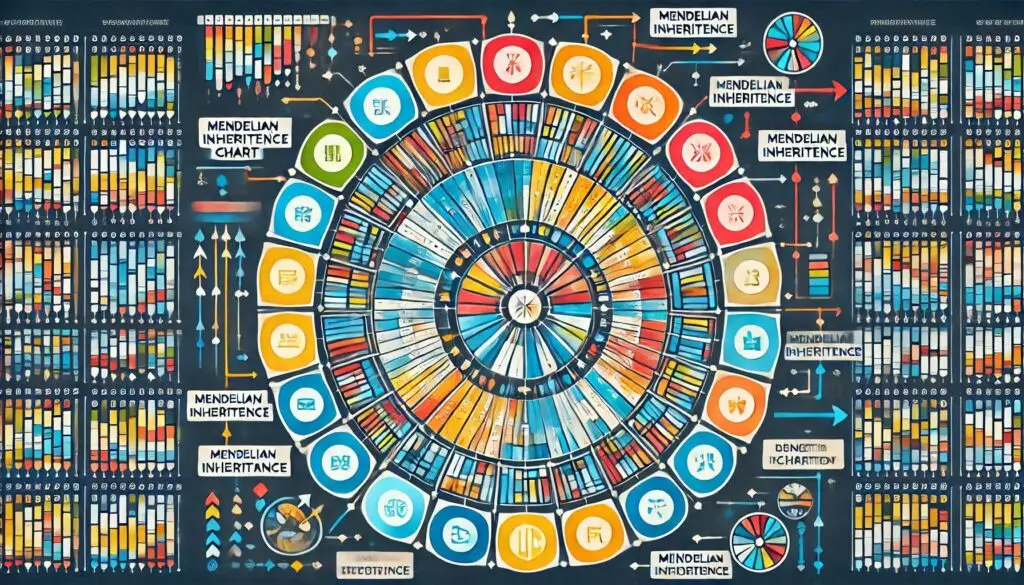The Law of Independent Assortment

The Law of Independent Assortment is a cornerstone of genetics. This principle explains how different traits are inherited independently from one another. First proposed by Gregor Mendel in the 1860s, it has shaped our understanding of heredity. In this article, we will explore this law in detail, its implications, and its exceptions.
What is the Law of Independent Assortment?
The Law of Independent Assortment states that alleles for different traits segregate independently during gamete formation. This means that the inheritance of one trait does not affect the inheritance of another trait. For example, if we consider seed color and seed shape in pea plants, these traits assort independently.
Historical Background
Gregor Mendel conducted his groundbreaking experiments using pea plants. By observing how traits were passed down through generations, he formulated his laws of inheritance. His work laid the foundation for modern genetics. You can read more about Mendel’s experiments in detail on Nature Education.
Importance in Genetics
Understanding the Law of Independent Assortment is crucial for several reasons:
- Genetic Variation: It explains how genetic diversity arises within populations.
- Breeding Practices: It helps breeders predict offspring traits.
- Evolutionary Biology: It provides insights into how traits evolve over time.
How Does Independent Assortment Work?
The Process During Meiosis
Independent assortment occurs during meiosis, a type of cell division that produces gametes (sperm and eggs). During meiosis, homologous chromosomes line up randomly along the cell’s equator. This random alignment leads to different combinations of alleles being distributed into gametes.
Key Steps in Meiosis
- Prophase I: Homologous chromosomes pair up.
- Metaphase I: Chromosome pairs align randomly at the equator.
- Anaphase I: Pairs are pulled apart to opposite poles.
- Telophase I and Cytokinesis: Two new cells form.
This process ensures that each gamete contains a unique combination of alleles. You can learn more about meiosis at Khan Academy.
Dihybrid Crosses: A Practical Example
To illustrate independent assortment, consider a dihybrid cross involving two traits in pea plants: seed color (yellow or green) and seed shape (round or wrinkled).
- Parental Generation (P): A round yellow seed plant (RRYY) is crossed with a wrinkled green seed plant (rryy).
- F1 Generation: All offspring (RrYy) exhibit round yellow seeds.
- F2 Generation: When F1 plants self-pollinate, the F2 generation displays a phenotypic ratio of 9:3:3:1. This ratio represents:
- 9 Round Yellow
- 3 Round Green
- 3 Wrinkled Yellow
- 1 Wrinkled Green
This outcome demonstrates that the traits segregate independently during gamete formation.
Mathematical Representation
The law can also be expressed mathematically. For two traits with two alleles each, the probability can be calculated as follows:
P(Genotype)=P(Trait 1)×P(Trait 2)
P(Genotype)=P(Trait 1)×P(Trait 2)
For example, if each trait has a probability of
12
2
1
, then:
P(Both Traits)=12×12=14
P(Both Traits)=
2
1
×
2
1
=
4
1
This formula helps predict offspring genotypes based on parental genotypes.
Implications of the Law
Genetic Diversity
The Law of Independent Assortment plays a vital role in promoting genetic diversity within populations. This diversity is essential for evolution and adaptation to changing environments.
Breeding and Agriculture
In agriculture, understanding this law allows breeders to create new plant varieties with desirable traits. For instance, by crossing plants with different beneficial traits, breeders can enhance crop yields or resistance to diseases.
Human Genetics
In humans, independent assortment affects how traits such as eye color or blood type are inherited. Genetic counselors use this knowledge to help families understand hereditary conditions.
Exceptions to the Law of Independent Assortment
While Mendel’s law holds true for many traits, there are exceptions:
Genetic Linkage
Genes located close together on the same chromosome tend to be inherited together due to genetic linkage. This phenomenon violates the principle of independent assortment because linked genes do not assort independently during meiosis.
Example of Genetic Linkage
For instance, if two genes control flower color and flower shape and are located on the same chromosome, they may be inherited together more often than expected by chance.
Incomplete Dominance and Codominance
In cases where incomplete dominance or codominance occurs, the traditional ratios predicted by independent assortment may not apply. These scenarios involve more complex interactions between alleles.
Environmental Influence
Environmental factors can also influence gene expression and trait inheritance. For example, temperature can affect flower color in some plant species.
Conclusion
The Law of Independent Assortment is a fundamental concept in genetics that explains how traits are inherited independently from one another. Understanding this law enhances our knowledge of heredity and genetic variation. It has practical applications in agriculture, medicine, and evolutionary biology.
For more pearls of Vets Wisdom:
Rabbit Farming





Responses